
Symphyotrichum novaeangliae New England Aster (per oz) Michigan Wildflower Farm
The New England aster ( Symphyotrichum novae-angliae ) is a standout fall flower. The plants feature erect stems that can grow several feet tall. The stems have fine hairs, or bristles with many lance-shaped leaves. In the late summer to early fall, the profuse daisy-like blooms appear.

Aster novaeangliae 'Violetta' Farmyard Nurseries
Prune early in the season to encourage bushier plant growth. Pruning August and later will sacrifice aster flowers ; Once your asters eclipse 4 feet, use stakes and plant support clips to keep the stalks from flopping over, allowing you to better see the butterfly and bee feeding frenzy.; Symphyotrichum novae-angliae can be planted/divided in spring or fall…we recommend spring due to the.

Symphyotrichum novaeangliae / New England Aster Wild Ridge Plants
The New England aster blooms from August to October and grows in abundance adding vibrant colour to the autumn landscape. In home gardens it grows best in sunny locations. Distinguishing Features New England asters have large rose-purple flowers, with numerous rays. It has clasping leaves and a rough stem that has several branches reaching out.
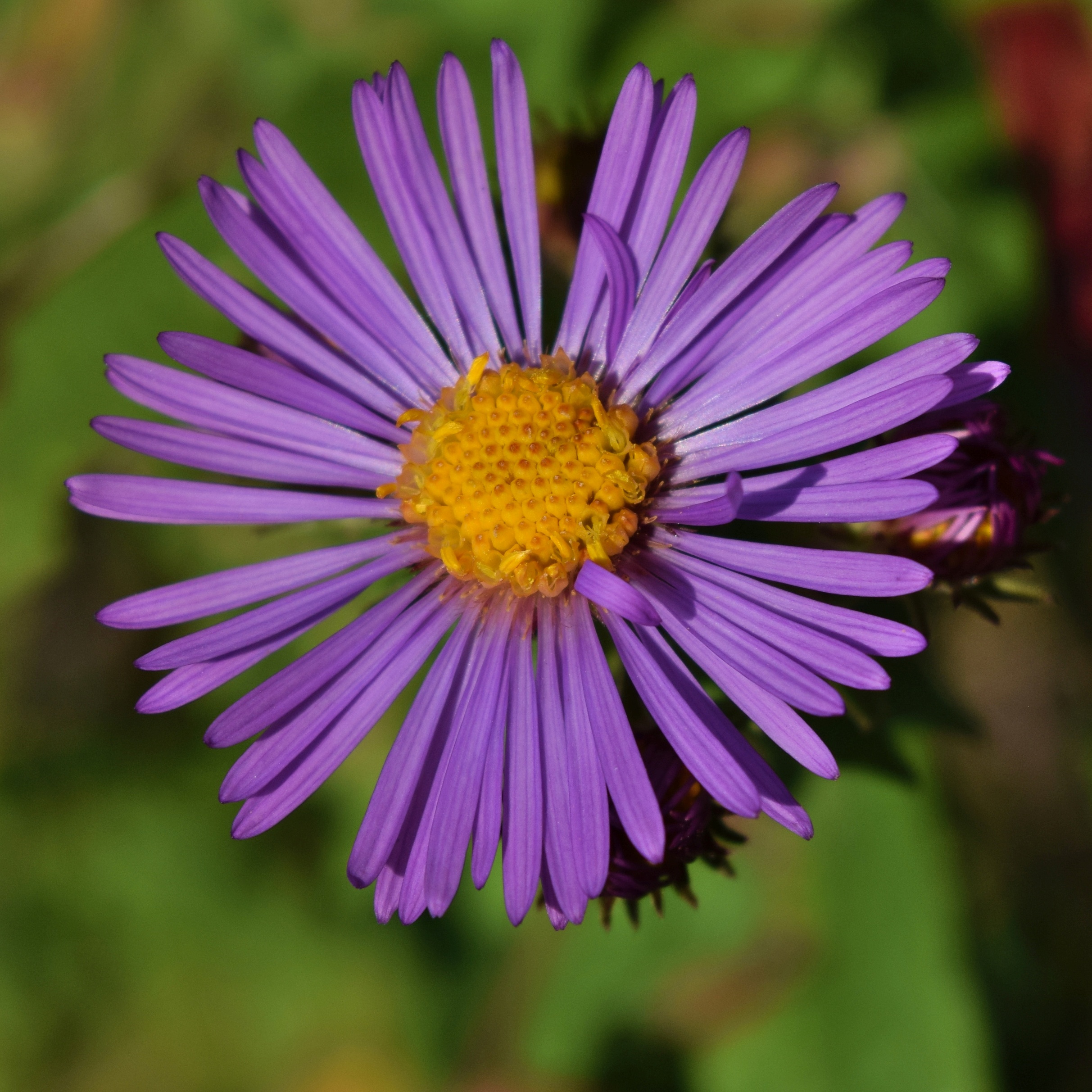
Aster novaeangliae Multiplants
It is a distinctive species having more ray flowers than other America-asters (45-100 per flower head), of a deep red-purple. Habitat Anthropogenic (man-made or disturbed habitats ), meadows and fields Characteristics Habitat terrestrial New England state Connecticut Maine Massachusetts New Hampshire Rhode Island Vermont Leaf type

Symphyotrichum novaeangliae (New England Americanaster) Go Botany
New England aster, Symphyotrichum novae-angliae, is a perennial member of the Asteraceae family that includes chrysanthemums and daisies. Also known as Michaelmas daisy, this nectar-rich flower is native to the US, where it grows wild along roadways and in meadows.
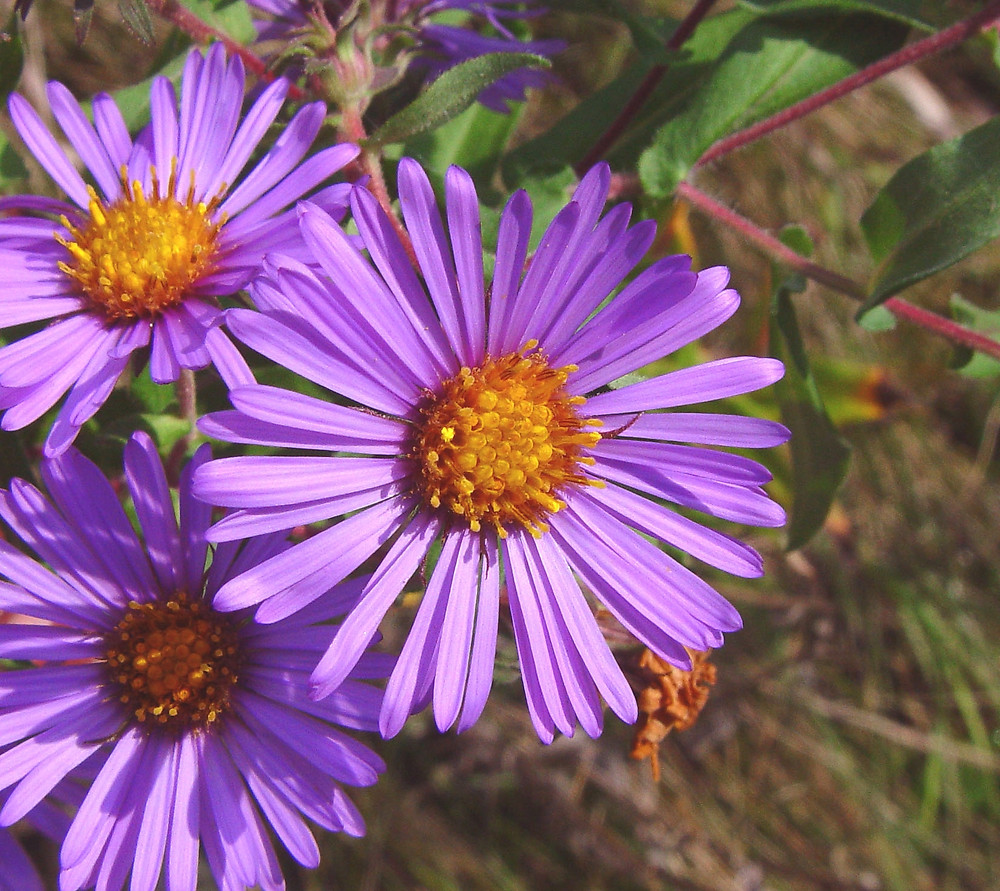
Symphyotrichum novaeangliae (New England Americanaster) Go Botany
Symphyotrichum. Asteraceae (Aster) part shade, sun; moist fields, along roads, edges of woods. Pick an image for a larger view. See the. Branching clusters of stalked flowers at the top of the stem and arising from upper leaf axils. Branches are often leafy and crowded with flowers. Flowers are 1 to 1½ inches across with 40 to 100 narrow.

Aster novaeangliae 'Purple Dome' 1 (New England Aster) Scioto Gardens Nursery
The New England Aster, scientifically known as Aster novae-angliae, is a striking and important native North American plant with many benefits for your garden and local ecosystem. Native: The plant is native to most of the central and northeastern United States and southeastern Canada, from Manitoba south to Louisiana and east to Maine.

Aster, New England (Symphyotrichum novaeangliae)
Perfect for small gardens. Thrives in full sun or partial shade, in average, medium moisture, well-drained soils. Moist, rich soils are preferred. Provide good air circulation to avoid foliage diseases such as powdery mildew. Drought, salt, and wet soil tolerant.
.jpg)
Aster novaeangliae 'Harringtons Pink'
PLANT DESCRIPTION: Aster novae-angliae is a sturdy clump forming perennial with stiff hairy stems. Leaves are lance shaped, pubescent and up to 4" long. Each leaf clasps the stem and contains two protruding basal lobes. Large flower heads are arranged in showy panicles.
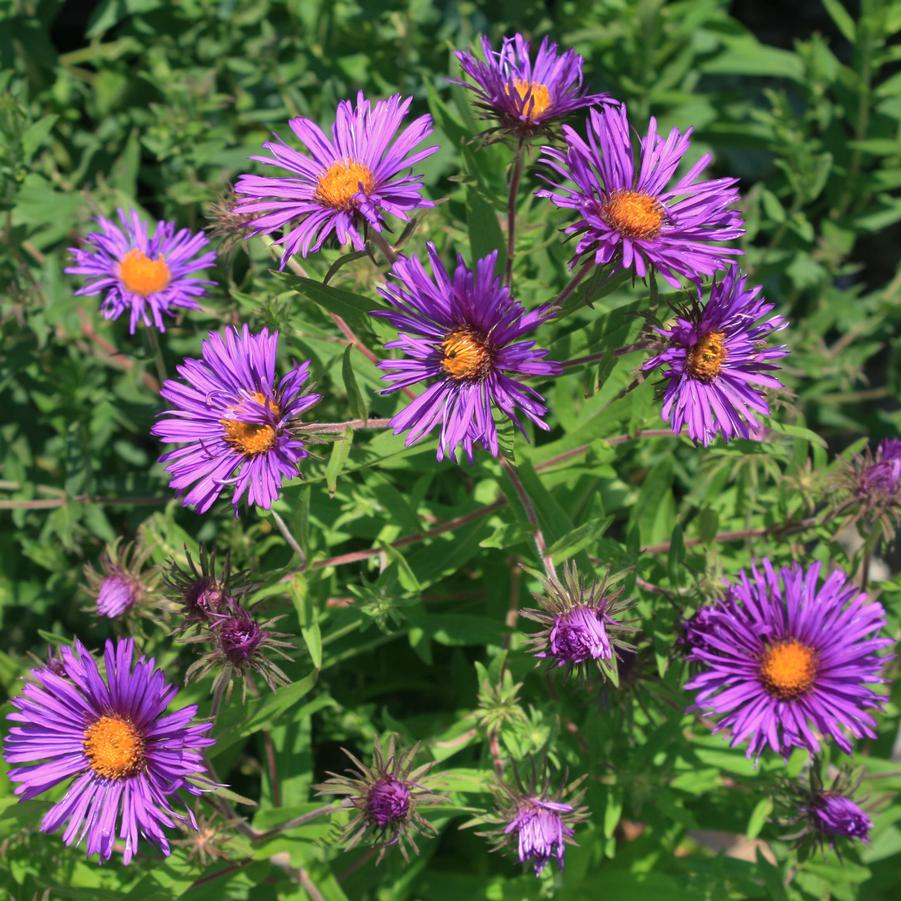
Aster (Symphyotrichum) novaeangliae 'Hella Lacy' New England Aster from Sandy's Plants
Aster novae-angliae L. LANO: Lasallea novae-angliae (L.) Semple & L. Brouillet: VINO5: Virgulus novae-angliae (L.) Reveal & Keener: Symphyotrichum novae-angliae (L.) G.L. Nesom New England aster. About the National Wetland Plant List. The vascular plants of Massachusetts: A county checklist, first revision. Massachusetts Natural Heritage.
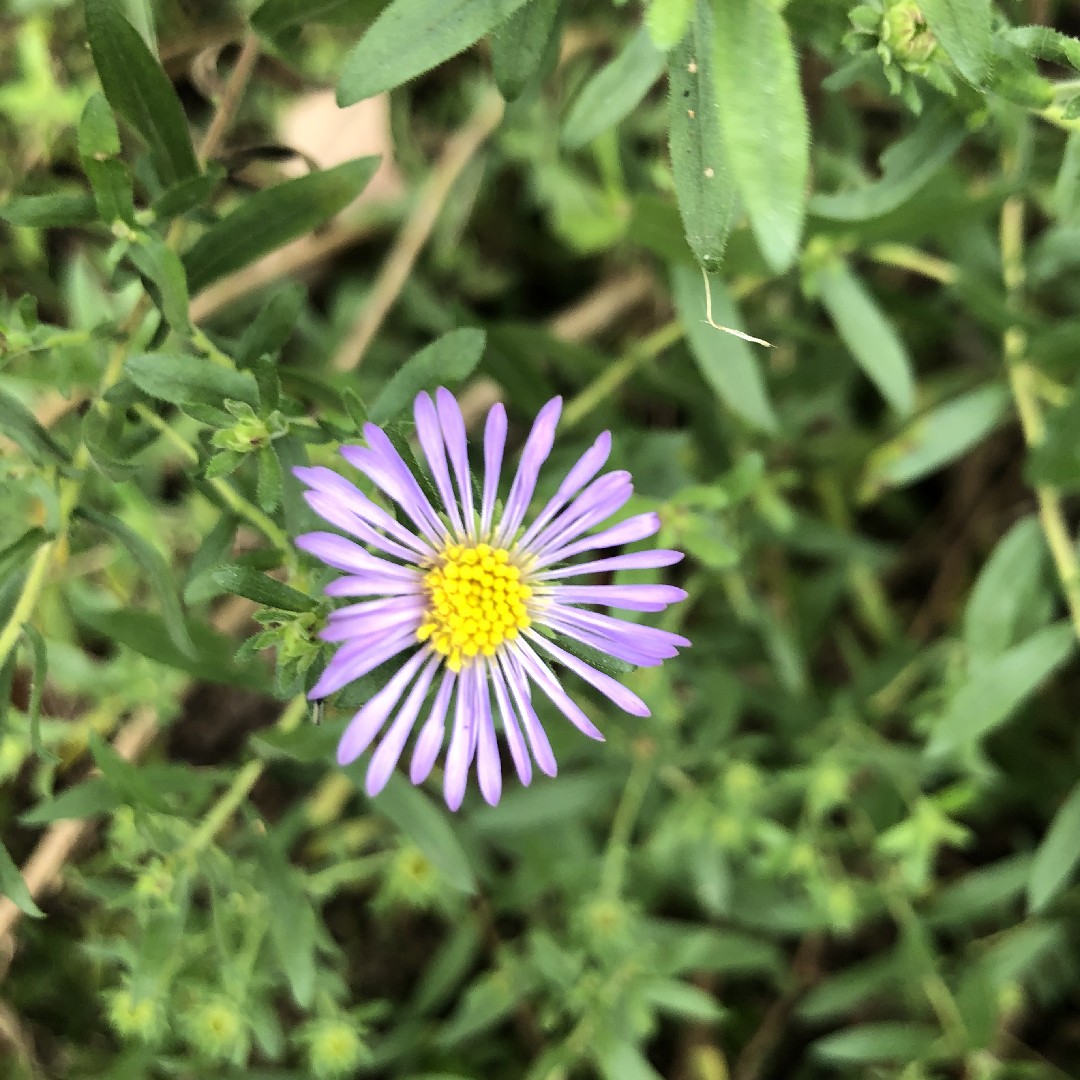
New england aster (Symphyotrichum novaeangliae) Flower, Leaf, Uses PictureThis
Symphyotrichum novae-angliae, commonly called New England aster, is a Missouri native perennial which occurs in moist prairies, meadows, thickets, low valleys and stream banks (Steyermark) throughout the State. It is a stout, leafy plant typically growing 3-6' tall with a robust, upright habit.
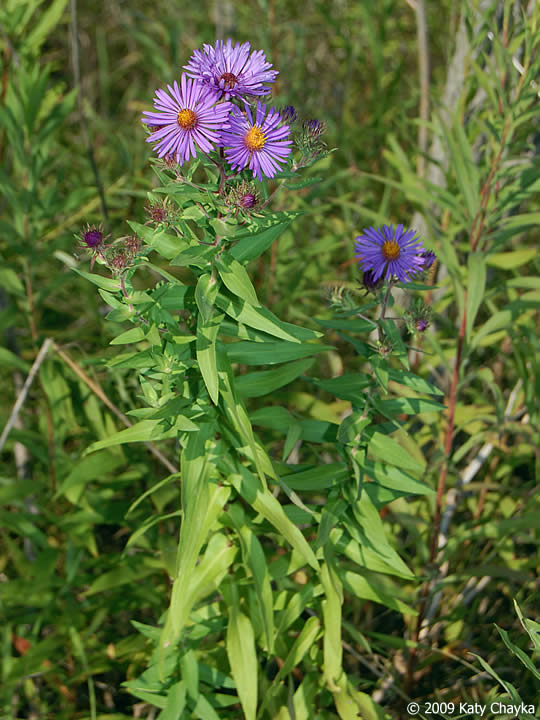
Symphyotrichum novaeangliae (New England Aster) Minnesota Wildflowers
The stalk of New England Aster will be round and light green to reddish-purple, branching near the top where flowering occurs. The stem usually has small white hairs. New England Aster stalk Leaf. Leaves of New England Aster are alternate on the stalk, and have to petiole/stem as they clasp or wrap-around the stalk. And individual leaf is 3-4.
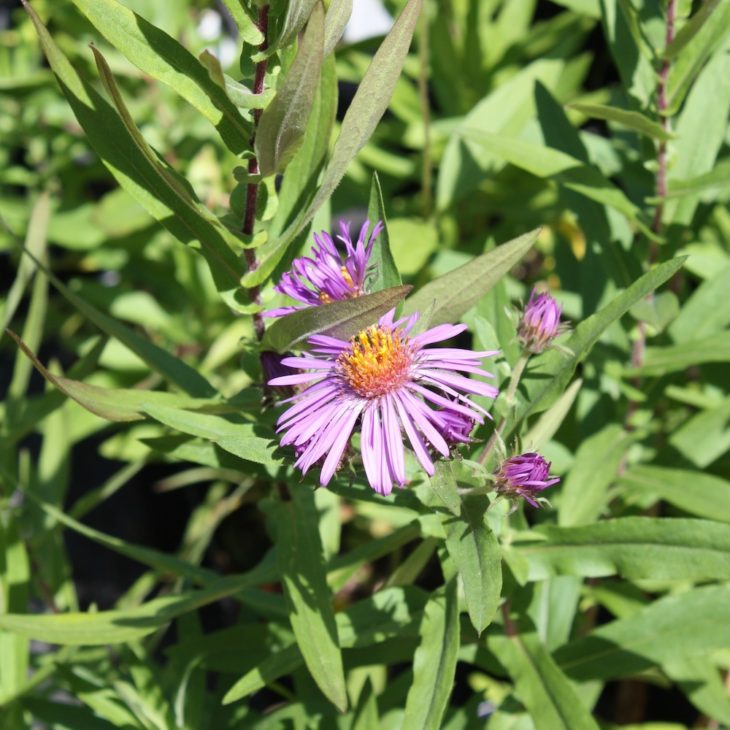
Aster novaeangliae New England Aster Keystone Wildflowers
New England aster is a member of the Asteraceae (Aster or Composite) family. Until recently, it was placed in the genus Aster, a then large and complex group. Its name Symphyotrichum, means 'united hairs', and novae-angliae, 'New England.' The old name Aster meant star in reference to the shape of the flower.
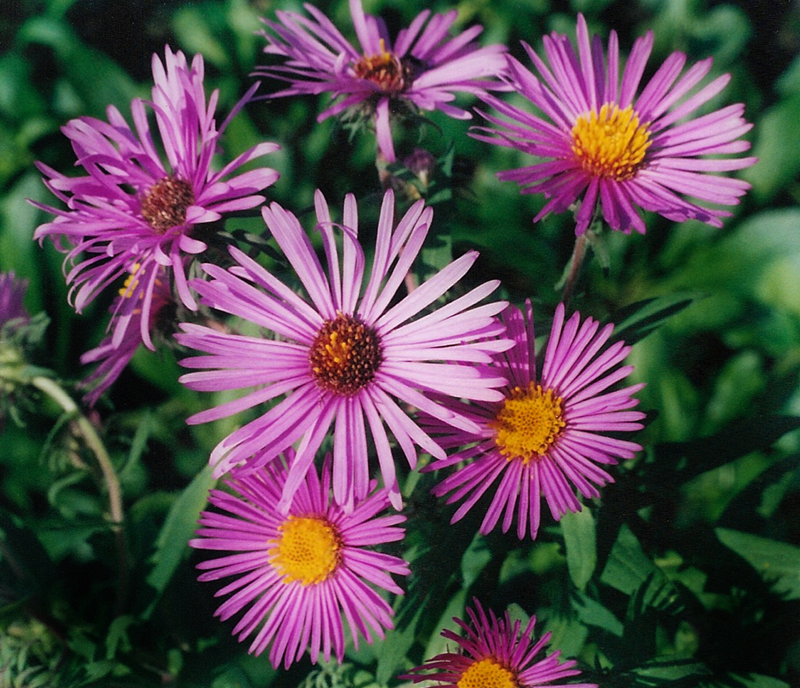
Symphyotrichum novaeangliae, New England Aster at Toadshade Wildflower Farm
One of the tallest and most spectacular of the Asters, Aster novae-angliae (New England Aster) is a robust, upright perennial boasting a profusion of showy daisy-like flowers, 1.5 in. wide (4 cm), with rose-purple rays surrounding sunny yellow centers.

FileAster novaeangliae 'Barr's Pink', Elfenau.jpg Wikimedia Commons
Zones are based on the average annual extreme minimum temperature an area is expected to receive during the winter. They are used to determine whether a plant is likely to be perennial in your area. If the number in the green box below is within the zone range listed for the plant, it will be hardy for you and thrive in your climate. 3. 4. 5. 6.

Aster novaeangliae landscape architect's pages
Symphyotrichum novae-angliae (formerly Aster novae-angliae) is a species of flowering plant in the aster family ( Asteraceae) native to central and eastern North America.